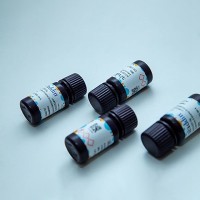Micropropagation of Tulip: Production of Virus-Free Stock Plants
互联网
632
We describe here a new tulip micropropagation method based on the cyclic shoot multiplication in presence of the thidiazuron (TDZ), which enables the production of virus-free stock plants, speeds up breeding, and provides new genotypes for the market. In our novel protocol, cyclic shoot multiplication can be performed for 2–3 years by using TDZ instead of other cytokinins, as 6-benzylaminopurine (BAP) and N6 -(-isopentyl)adenine (2iP). It makes possible to produce 500–2,000 microbulbs from one healthy plant. There are six main stages of tulip micropropagation. Stage 0 is the selection of true-to-type and virus-free plants, confirmed by ELISA. Fragments of flower stems isolated from bulbs are used as initial explants. Shoot multiplication is based on the regeneration of adventitious shoots, which are sub-cultured every 8 weeks. In the Stage 3, the specially prepared shoots are induced by low temperature treatment to form bulbs which finally develop on a sucrose-rich medium at 20�C. Bulbs are then dried for 6 weeks and rooted in vivo. The number of multiplication subcultures should be limited to 5–10 cycles in order to lower the risk of mutation. Virus indexing should be repeated 3–4 times, at the initial stage and then during shoot multiplication. Genetic stability of micropropagated shoots can be confirmed using molecular markers.








